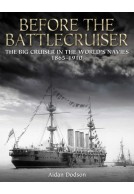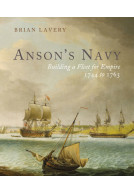Spoils of War (Hardback)
The Fate of Enemy Fleets after the Two World Wars

Pages: 328
Illustrations: 150
ISBN: 9781526741981
Published: 29th April 2020
(click here for international delivery rates)
Need a currency converter? Check XE.com for live rates
While a large number of books have dealt with the navies and war at sea during the World Wars, the immediate aftermaths have generally received only minimal coverage. However, the fates of defeated navies are of enormous interest from a number of perspectives. These include the relative priorities of the victorious powers, acquisition and testing of ex-enemy materiel and the intended future capabilities of those ex-enemy navies that were to be allowed to continue to exist.
This new book traces the histories of navies and ships of the defeated powers from the months leading up to the relevant armistices or surrenders through to the final execution of the appropriate post-war settlements. In doing so, it discusses the way in which the victorious powers reached their final demands, how these were implemented, and to what effect. The later histories of ships that saw subsequent service, either in their original navies or in those navies which acquired them, are also described. In doing this, much use is made of material drawn from archival, and in some cases archaeological, sources, some of which has never previously been used. Through these, a wide range of long-standing myths are busted, and some badly distorted modern views and assessments of events in the wake of the conflicts put right.
The fascinating narrative will be accompanied by tabulated lists of all major navy-built (and certain significant ex-mercantile) enemy ships in commission at the relevant date of the armistice or surrender, or whose hulks were specifically listed for attention in post-Second World War allied agreements. These will include key dates in their careers and their ultimate fates.
This highly original book, drawing on archaeological evidence as well as archival sources, and including numerous photographs will become an essential reference tool for all those interested in the naval history of the two World Wars.
Spoils of War is a significant piece of research; as well as resolving many of the outstanding issues with regard to the loss of some of the vessels, approximately a third of the publication is given over to a detailed listing of the fate of each of the ships, in the navies concerned, at the end of the fighting. The entry for each vessel includes the following details: name; class, builder; launch date; completion date; allocation (at the end of the war); and fate. For each type of vessel, further tables give details of class, displacement, length, beam, installed power, speed and armament. Immaculately produced, the book is a prodigious feat!
The Naval Review
Read the full review here
This book will be invaluable for maritime researchers; to have so much material combined into one comprehensive volume is a Godsend for historians and archaeologists alike.
Warship Annual 2021 Edition
This is no dry reference book, rather it is well-written and highly informative, drawing a fascinating conclusion to the naval story of both World Wars. The amount of research and detail that has gone in this book is staggering. In the Introduction the authors state that they found that information on the final days of many ships was sketchy at best. They conclude the book by modestly claiming that “few loose ends remain” - an understatement if there ever was one! They have written what I suggest is the definitive record of ships that survived both wars. Highly recommended.
Warship World July/August issue 2020
In conclusion this is a very interesting book which discusses a topic not described in this way. Very highly recommended.
World Ship Society - Marine News, February 2021
A fresh and very interesting work.
Miniaturas JM
Read the full Spanish review here
This book is highly recommended as a reliable source for this often previously unknown, obscure, widely dispersed, or uncertain information about ship dispositions. Its description and selected reproduction of the final legal documents governing the allocations also is a significant contribution to warship history.
Warship International from the International Naval Research Association
The fate of enemy fleets after the two World Wars, was a very important part of Treaty negotiations. The Treaty following WWI was generally accepted as too severe, creating the ground for German resentment and a new World War. As a result, the Allies were more sensitive and constructive in several ways, aided by the Western Allies seeing the threat then posed to them by the USSR – Most Highly Recommended
Firetrench
Read the full review here
Including a host of archive photos throughout the book, this is really fascinating for anyone with an interest in Naval History of the 20th Century. A super reference for your bookshelf, another highly recommended book from Seaforth.
Military Model Scene, Robin Buckland
Read the full review here
The backgrounds of the two authors really gives the book the quality and assurance that your getting a top quality, well researched book. As with most books when you have someone in a specific profession as the book, it’s nearly always going to be backed up by superior knowledge. As well as a great read, this book has an abundance of great of photographs, maps, diagrams, plans and tables which really do bring an added bonus to the book. This I should say is a book that many would describe as ‘coffee table’ sized, which I think suits the books best, especially for all the pictures and diagrams enclosed. I would fully recommend this book as an excellent read.
UK Historian
Read the full review here
This book traces the histories of navies and ships of defeated powers from the months leading up to the relevant armistices or surrenders through to the final execution of the appropriate post-war settlements. It discusses the way in which the victorious powers reached their final demands, how these were implemented, and to what effect. The later histories of ships that saw subsequent service are also described. The authors have drawn on archaeological evidence as well as archival sources, and include numerous photographs, maps and extensive tables of details of individual ships. For those who need to finally know the ultimate fate of the often gallant ships that strove against the Allies in both world wars, this is the book.
Julian Stockwin
Read the full review here
The book is well organised, and tells an interesting story. The reference section is well researched, and should answer some of the mysteries surrounding the fates of some of the more obscure ships, although in some cases certainty might not be entirely possible.
History of War
Read the full review here
Their joint effort has produced a fascinating and authoritative book on a subject that has not previously received sufficient attention. It can fairly be described as the definitive work on this complex subject.
Australian Naval Institute
Read the full review here
'Our pick of the latest new products and best kit launches'
Yachts & Yachting, May 2020
About Serena Cant
SERENA CANT is a Marine Information Officer at Historic England, specialising in shipwreck documentation and research. She is the author of England’s Shipwreck Heritage: from logboats to U-boats (English Heritage, 2013) and has written and researched extensively on shipwrecks of the First World War and its aftermath.
About Aidan Dodson
Aidan Dodson is Hon Professor of Egyptology in the Department of Anthropology & Archaeology at the University of Bristol, where he has taught since 1996. He has also maintained parallel research interests in naval history, and worked as a civil servant in defence procurement for 25 years, including project leader for the offshore patrol vessel HMS Clyde. He is the author of more than 300 articles and reviews, plus some twenty books, including The Kaiser’s Battlefleet: German capital ships 1871–1918 ,Before the Battlecruiser: the big cruiser in the world’s navies 1865–1910 and Spoils of War: the fates of the ex-enemy fleets after the two World Wars, with Serena Cant, all published by Seaforth.





















